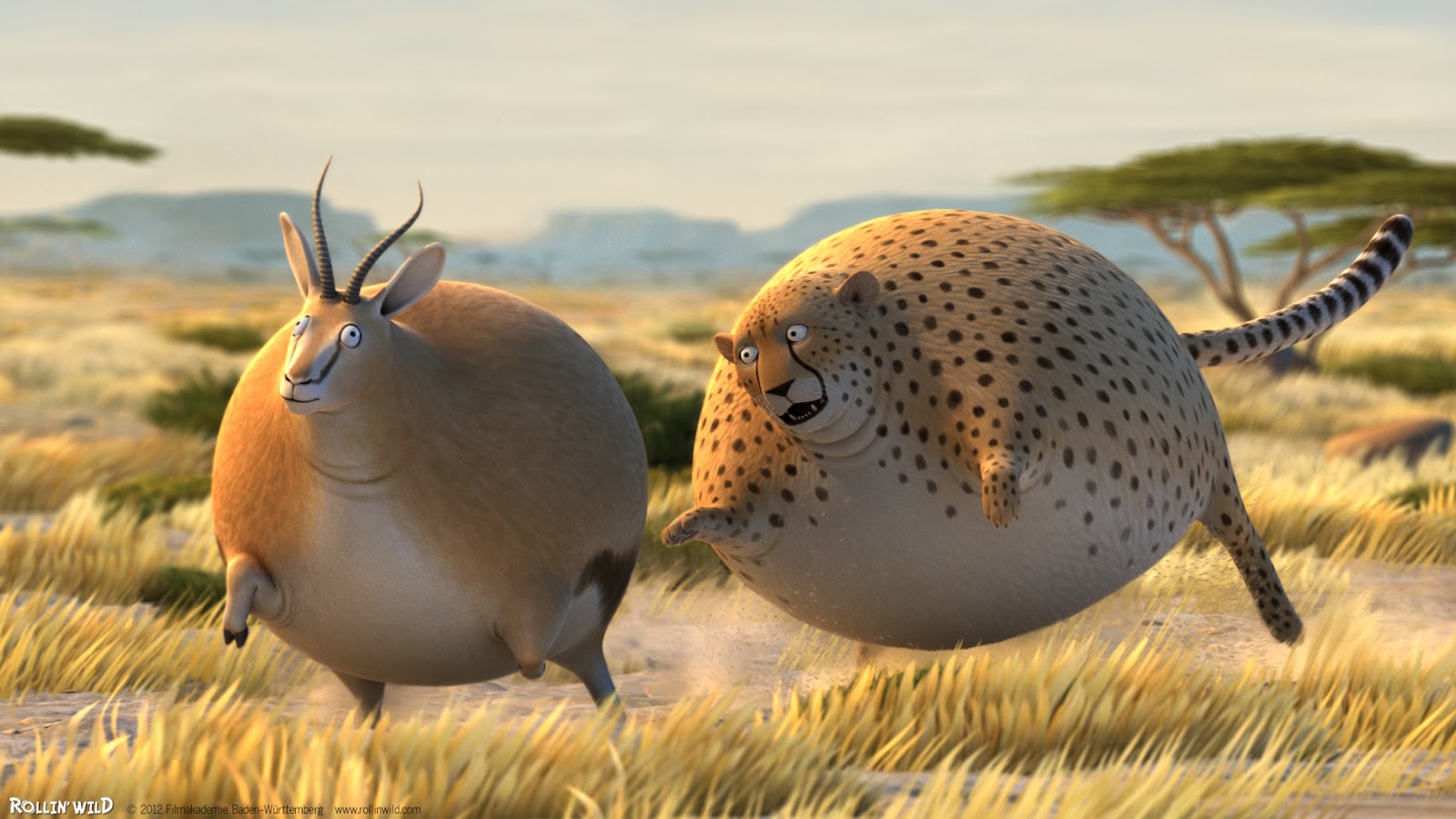When it comes to the fattest animal in the world, you might be surprised by the sheer size and weight these creatures can achieve. Imagine a being so massive that its tongue alone weighs more than an elephant! Sounds wild, right? Well, buckle up because we’re about to take a deep dive into the world of nature's biggest and fattest animals. This isn’t just about numbers—it’s about understanding how these giants survive, thrive, and shape our planet. So, let’s get started!
Now, you might be wondering why knowing about the fattest animal in the world even matters. Well, it’s not just about trivia; it’s about appreciating the incredible diversity of life on Earth. These animals have adapted in ways that boggle the mind, and their stories are nothing short of inspiring. Whether you’re a wildlife enthusiast or just someone curious about the world around you, this article will leave you in awe.
By the time you finish reading, you’ll have a newfound respect for these heavyweights of the animal kingdom. Not only will you learn about the largest creatures on the planet, but you’ll also discover how they contribute to ecosystems and why they’re so important to protect. So, without further ado, let’s jump into the fascinating world of the fattest animal in the world!
Read also:Aaron Pierre Husband The Man Behind The Star
Table of Contents
- The Largest Animals in the World
- The Blue Whale: The Fattest Animal in the World
- Biological Adaptations of Fat Animals
- Ecological Importance of Large Animals
- Human Impact on Fat Animals
- Diet and Lifestyle of the Fattest Animals
- Conservation Efforts for Fat Animals
- Interesting Facts About Fat Animals
- Comparison Between Fat Animals
- Future Predictions for Fat Animals
The Largest Animals in the World
Let’s kick things off by talking about the largest animals in the world. When we say "largest," we’re not just talking about height or length—we’re talking about sheer mass and weight. These animals are nature’s heavyweights, and they’ve got some seriously impressive stats. For example, did you know that the blue whale can weigh up to 200 tons? That’s heavier than 30 African elephants combined!
But what makes these animals so big? It’s a combination of factors, including their diet, habitat, and evolutionary adaptations. Take the elephant, for instance. These gentle giants can weigh up to 6 tons, and they spend most of their day munching on vegetation. Similarly, the blue whale feeds on tiny krill, but it consumes them in massive quantities—up to 4 tons per day!
Why Size Matters
Size isn’t just about being big; it’s about survival. Larger animals often have an advantage when it comes to regulating body temperature, finding food, and avoiding predators. For instance, the blue whale’s blubber helps it stay warm in icy waters, while the elephant’s size makes it less vulnerable to predators. These adaptations are crucial for their survival in the wild.
The Blue Whale: The Fattest Animal in the World
Now, let’s talk about the star of the show—the blue whale. This majestic creature is not only the largest animal in the world but also the fattest. Weighing in at an astonishing 200 tons, the blue whale is a true heavyweight champion. But what makes it so fat? It’s all about its diet and lifestyle.
The blue whale feeds on krill, tiny shrimp-like creatures that it scoops up by the thousands. In fact, during feeding season, a blue whale can consume up to 40 million krill per day! This calorie-dense diet allows it to store massive amounts of fat, which it relies on during the winter months when food is scarce.
Blue Whale Stats
- Weight: Up to 200 tons
- Length: Up to 100 feet
- Diet: Krill (up to 4 tons per day)
- Habitat: Oceans worldwide
Biological Adaptations of Fat Animals
So, how do these animals manage to carry around so much weight? It all comes down to biology. Fat animals have evolved a range of adaptations that allow them to thrive despite their size. For example, the blue whale’s blubber provides insulation and energy storage, while the elephant’s thick skin protects it from the elements.
Read also:Who Is Rivers Married To Unveiling The Love Story Behind The Spotlight
But it’s not just about physical adaptations. Fat animals also have unique metabolic processes that help them manage their weight. For instance, the blue whale’s slow metabolism allows it to conserve energy during long migrations. Similarly, the elephant’s digestive system is designed to extract as much nutrition as possible from plant material.
Key Adaptations
- Blubber for insulation and energy storage
- Thick skin for protection
- Slow metabolism for energy conservation
- Efficient digestive systems
Ecological Importance of Large Animals
Large animals like the blue whale and elephant play a crucial role in maintaining healthy ecosystems. They help regulate populations of smaller animals, distribute nutrients, and even influence climate patterns. For example, the blue whale’s poop is rich in iron, which fertilizes phytoplankton and helps combat climate change.
Similarly, elephants are known as "ecosystem engineers" because they shape their environments in profound ways. By knocking down trees and creating pathways, they open up habitats for other species. These animals may be big, but their impact on the planet is even bigger.
Human Impact on Fat Animals
Unfortunately, human activities have had a devastating impact on fat animals. Habitat destruction, pollution, and climate change have all taken their toll on these magnificent creatures. For example, the blue whale population was decimated by commercial whaling in the 20th century, and although they’re now protected, they still face threats from ship strikes and entanglement in fishing gear.
Elephants, too, have suffered from poaching and habitat loss. Their tusks are highly prized in the illegal ivory trade, and their forests are being cleared for agriculture. It’s a sad reality, but one that we must address if we want to protect these animals for future generations.
What Can We Do?
- Support conservation organizations
- Reduce plastic waste
- Advocate for stronger environmental policies
- Spread awareness about the importance of protecting fat animals
Diet and Lifestyle of the Fattest Animals
Let’s talk about the day-to-day lives of fat animals. What do they eat, and how do they spend their time? For the blue whale, life revolves around feeding and migrating. During the summer months, they gorge on krill in polar waters, building up fat reserves for the winter. Then, they migrate to warmer waters to breed and give birth.
Elephants, on the other hand, spend most of their day eating. They can consume up to 300 pounds of vegetation per day, and they travel long distances in search of food and water. Their social lives are also fascinating; elephants live in matriarchal herds and have complex relationships with one another.
Diet Breakdown
- Blue Whale: Krill (up to 4 tons per day)
- Elephant: Vegetation (up to 300 pounds per day)
Conservation Efforts for Fat Animals
Thankfully, there are many organizations and individuals working to protect fat animals. From anti-poaching initiatives to habitat restoration projects, these efforts are making a real difference. For example, the International Whaling Commission has implemented strict regulations to protect blue whales, and many countries have established national parks to safeguard elephant populations.
But there’s still a long way to go. Climate change continues to threaten marine ecosystems, and illegal wildlife trade remains a major problem. It’s up to all of us to do our part and ensure that these animals have a future.
Success Stories
- Blue whale populations are slowly recovering thanks to conservation efforts
- Elephant populations have stabilized in some areas due to anti-poaching measures
Interesting Facts About Fat Animals
Here are some fun facts about fat animals that you might not know:
- The blue whale’s heart weighs as much as a small car
- Elephants can communicate with each other over long distances using infrasound
- Blue whales can dive up to 1,000 feet in search of food
- Elephants have the longest pregnancy of any land animal—up to 22 months
Comparison Between Fat Animals
So, how do fat animals compare to one another? Let’s take a look at some key stats:
| Animal | Weight | Length | Diet |
|---|---|---|---|
| Blue Whale | 200 tons | 100 feet | Krill |
| African Elephant | 6 tons | 13 feet | Vegetation |
Future Predictions for Fat Animals
What does the future hold for fat animals? While there are certainly challenges ahead, there’s also reason for hope. Advances in technology and increased awareness about conservation issues are helping to protect these animals. For example, satellite tracking is being used to monitor blue whale migrations, and drones are being used to monitor elephant populations.
However, the biggest challenge will be addressing climate change. Rising temperatures and ocean acidification could have devastating effects on marine ecosystems, while deforestation and desertification could further threaten elephant habitats. It’s a tough road ahead, but with continued effort, we can ensure that these animals continue to thrive.
What’s Next?
The future of fat animals depends on all of us. By supporting conservation efforts, reducing our carbon footprint, and spreading awareness, we can make a difference. It’s not just about protecting these animals—it’s about preserving the planet for future generations.
Kesimpulan
And there you have it—the fascinating world of the fattest animal in the world. From the massive blue whale to the gentle elephant, these creatures remind us of the incredible diversity of life on Earth. They also highlight the importance of conservation and the need to protect our planet’s most vulnerable species.
So, what can you do to help? Start by educating yourself and others about the issues facing fat animals. Support conservation organizations, reduce your environmental impact, and advocate for stronger protections. Together, we can make a difference and ensure that these magnificent creatures continue to thrive.
And remember, every little bit helps. Whether it’s sharing this article with a friend or making a small donation to a conservation group, your actions can have a big impact. So, let’s work together to protect the fattest animal in the world and all the other amazing creatures that call our planet home!


